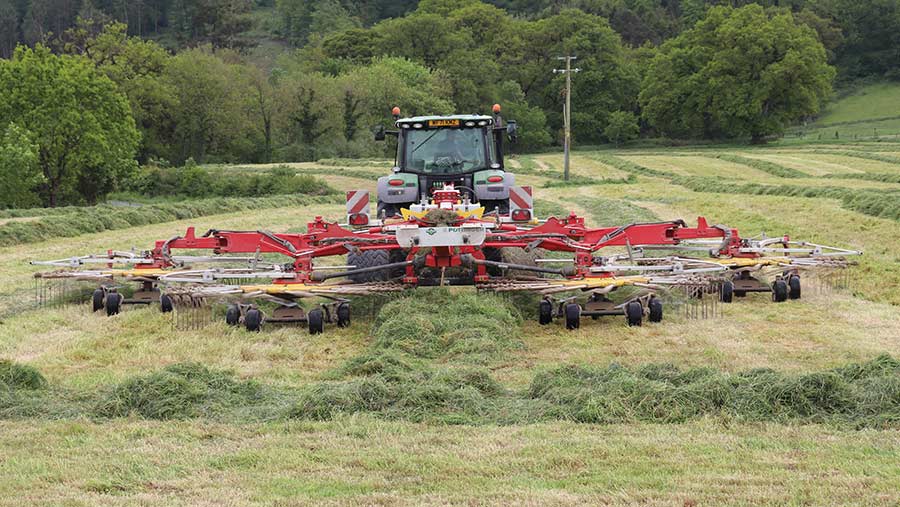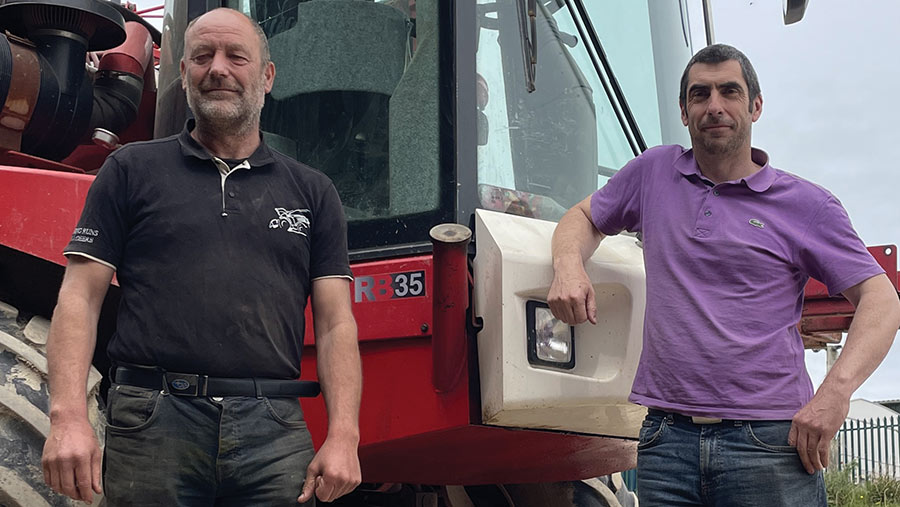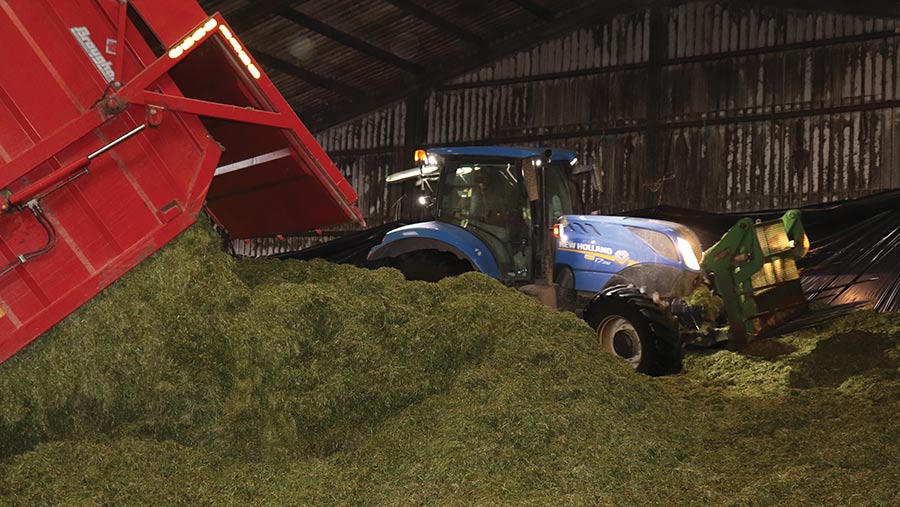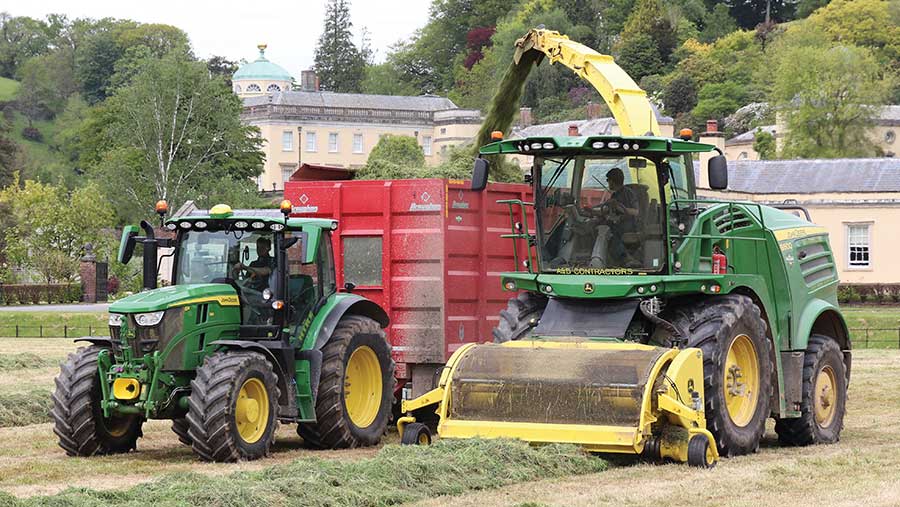Perfect storm of price rises causing carnage for Devon contractors
 © Andrew Faulkner
© Andrew Faulkner Contractors are the supermarkets. Farmers are the supermarkets’ customers. And machinery makers are the supermarkets’ suppliers.
Yes, it’s a bizarre analogy. But let’s run with it… in relation to contractor charges for hedgecutting.
“The hedgecutting job is like a supermarket’s end-of-aisle loss leader,” says Richard Barrow, who, along with Andrew Patt, manages A&B Contractors.
“We currently charge £45/hour for hedging, whereas the standard rate for just the tractor, driver and fuel is £50/hr. So, we’re effectively losing £5/hour whenever we go out with a trimmer.”
See also: Ultimate guide to buying a tractor 2023
A&B’s dilemma is that, with some other one-man bands in the area pricing the job at a lower rate, £45/hour is the maximum the firm can charge to remain competitive. In effect, it’s a loss-leader.

Richard Barrow (left) and Andrew Patt © Andrew Faulkner
“Where we differ from the all-powerful supermarkets,” adds Andrew, “is that we can’t go back to our suppliers and demand they drop their prices to fund our end-of-aisle promotion.
“Imagine the reaction if we went to McConnel and told them that, for the privilege of continuing to supply us with a £20,000 hedgecutter, they needed to provide us with three machines at just £5,000 apiece.”
While losing £5/hour is clearly unsustainable, charging more carries the risk of customers going elsewhere and potentially moving their other contracting operations, too.
Which is largely why A&B still offers the service, as well as helping to keep staff fully employed over the quieter winter months.
A&B Contractors, Porte Farm, Kentisbury, Barnstaple, Devon
Main services Contract farming supplying home-grown maize, wholecrop, cereals and straw; 3,850ha grass silage; 485ha wholecrop silage; 365ha maize drilling and harvesting; 570ha combining; 30,000 round bales; 9,500 square bales; ploughing and drilling; shoot plot establishment, maintenance and aftercare; umbilical slurry injecting/spreading with nurse tank; muck and biosolids spreading; vacuum tanking with dribble bar
Other Eight-strong haulage fleet; concrete and groundwork services; timber processing and harvesting
Staff 23 full-time on the ag business, up to 60 during seasonal peaks
Machine prices v rates
Pressure on charge-out rates also applies to more specialist work such as maize drilling.
Here is a simple example that explains why A&B prefers to maintain and run £30,000 seeders rather than invest in a high-spec £100,000 unit.
At a charge-out rate of £64/ha, a £100,000 maize drill has the potential to earn £20,480 across a 320ha season.
If you then subtract the tractor, operator and fuel costs of £5,700 (£50/hour x 114 hours, assuming a work rate of 2.8ha/hour), the maize drill’s annual income drops to £14,780.
To set against this, there’s the cost of the investment. Losing 20% annually in value over five years, the £100,000 drill’s depreciation charge is about £14,000/year, leaving just £780 to cover finance, wearing parts and a margin.
“And that’s why we don’t invest in £100,000 maize drills,” says Richard. “The figures simply don’t stack up.
“It’s much the same for big square balers, which again are priced new at about £100,000. Our machines are 10-15 years old and, while we can keep them going, that’s what we’ll do.
“Although we’d like to upgrade the balers, north Devon’s small fields and topography don’t allow us to achieve the sort of outputs required to justify the investment in new kit. And the older machines still do the job.”

© Andrew Faulkner
Current workload
At the time of our visit in late May, A&B was part-way through its 1,500ha first-cut workload.
The grass silaging season had kicked off at the usual time in mid-April, but then a 14-day break for weather had put them behind.
The knock-on effect of this delay, combined with a rise in temperatures, was a massive increase in crop bulk – about 50% up on the average.
“For three of our regular customers we had to return the next day with balers, because we couldn’t get all their crop in the clamp,” says Andrew.
Not so welcome for the contractor was the hefty crop’s associated increase in fuel use. “In a 140-acre day, the forager would normally get through 700-800 litres, but this year we were burning up to 1,300 litres.”
Which again brings the charge-out rate into question. A&B is moving to charging by the cubic metre for umbilical slurry work, as it makes more sense for both the customer and contractor.
So, why not switch to a similar per-tonne pricing structure for foraging?
“I don’t think our customers would go for it. And, unlike the umbilical flow meters, I’m not that confident in the yield measuring technology on foragers – to the extent that we didn’t spec it on the new 8600 last year, despite having it on the previous machine.
“We opted to spend the money on extra horsepower instead,” says Richard.

© Andrew Faulkner
Repairs
Machine repairs remain an ongoing issue, although this spring brought only two major breakdowns of note.
First up, the Kuhn butterfly rig. A bearing in one of the rear mowers failed, destroying the bed in the process. Panic ensued.
Kuhn was quoting a two- to three-week supply time for a new bed, whereas the John Deere alternative – Kuhn builds mowers in green for Deere – was on a one-month delivery.
So, A&B went with Kuhn. Interestingly, the Kuhn bed was £3,200, while exactly the same bed from Deere listed at £4,000.
More painfully, the firm’s John Deere 6130R loader tractor decided to drop its diff bolts into the crown and pinion, resulting in a £12,000 bill for a new diff.
Sadly, the tractor was just out of warranty, although Deere has agreed to contribute towards the cost.
The second incident explains why A&B prefers to move on its mainline tractors while they’re still covered by the manufacturer’s warranty, extended lead times allowing.
Tough farming climate
In effect, the current tough farming climate is creating the perfect storm for all contractors. And A&B is no different.
Its largely mixed farming customers are understandably nervous at the prospect of milk and cereal prices continuing to fall, inflated input prices, phased cuts in their Basic Payment Scheme money and rising interest rates.
At the same time, contractors’ labour rates have gone up, and annual new equipment price hikes of 5-8% are commonplace.
“We really don’t want to be spreading doom and gloom. But something has to change,” says Andrew.
“The industry can’t continue with machinery prices and input costs heading in one direction, farming incomes going the other, and contractors stuck in the middle.
“The positive is that we will adapt. There are always opportunities out there for contractors who are prepared to be flexible — and to cut their cloth accordingly.”
Kit list
- Tractors John Deere 6R215, 6195R (x3), 6155R (x8), 6830, 6630, 6140M, 6130R with loader; New Holland T7210 (x4); JCB Fastrac 4220
- Combines John Deere T550 (x2)
- Foragers John Deere 8600 and 7380i
- Forage wagons Pottinger Torro (x2)
- Handlers JCB 541-70, 536-60 and 531-70; Hyundai skid-steer
- Sprayers Bateman RB35 (36m/4,000-litre); Kuhn 12m mounted; Hardi 24m mounted
- Drills 2.5m, 3m and 4m combination drills; Vaderstad 4m Rapid drill; Moore direct drill; Hatzenbichler 6m air seeder; Accord 12-row fodder beet drill; Kuhn eight-row maize drill; Accord six-row maize drill
- Diggers JCB 3CX; eight swing shovels 0.5t to 22t
- Main other kit Mower combination (x3), square balers (x3), round balers (x4), rakes (x4), wrappers, silage trailers (x10), fertiliser spreaders (x2), ploughs (x4), slurry tankers (x5), muckspreaders (x10) and assorted umbilical equipment

